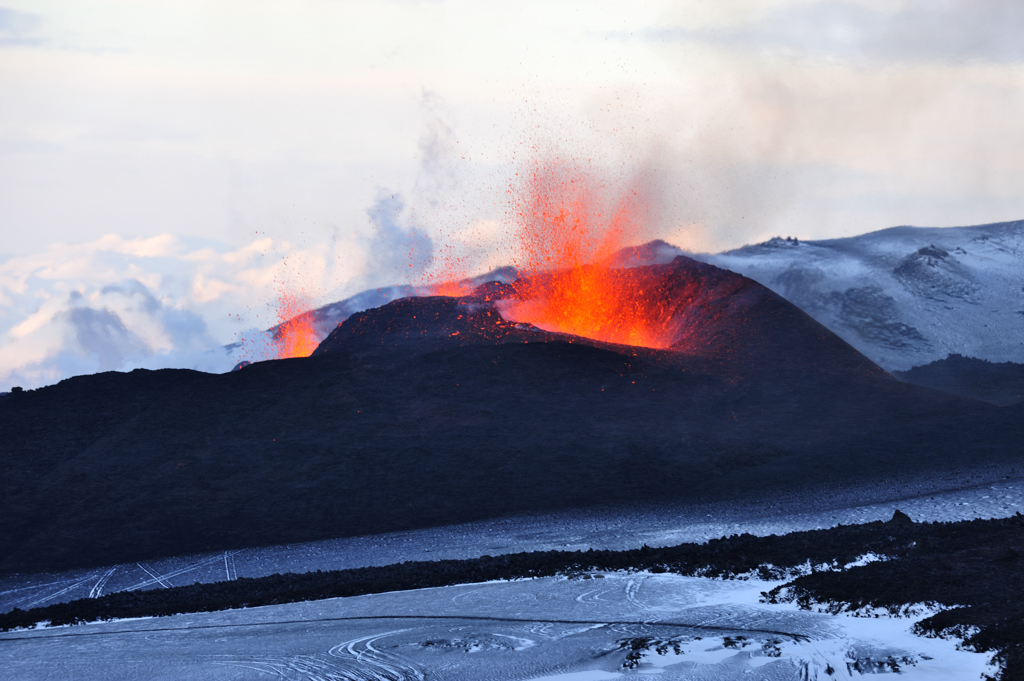 |
| Fire spewing out of Eyjafjallajokull during the 2010 eruptions Courtesy of Ulrich Latzenhofer |
Iceland and its volcanoes have been in the news a lot in the past few years. The Eyjafjallajokull volcano in Iceland was been very active in March
and April of 2010. The ash spewing forth from this volcano resulted in the
grounding of flights as far away as England, due to the danger it presents to
airplanes. Prior to this tantrum, the Eyjafjallajokull volcano had not erupted
for nearly 200 years. All of this attention serves to remind us that Iceland is
a land of many volcanoes, some of which can have global consequences should
they erupt. With that in mind, here are a few facts about Iceland's volcanoes
that can give us an idea of what goes on there in the "land of fire and
ice."
Hawaii gets a lot of attention for its volcanoes. This is
because it was formed by volcanoes. Evidence of their activity is present
everywhere there. Nonetheless, there are only two active volcanoes in the State
of Hawaii. Iceland has between 20 and 30 active volcanoes. That is more active
volcanoes than any other place on Earth.
The most active volcano in Iceland is Hekla. Hekla has an
elevation of 4,892 feet. It is a stratovolcano that is located in southern
Iceland. Hekla has erupted roughly once every ten years for the past fifty
years. A Hekla eruption can come on with little to no warning and can last for
weeks or months. Hekla was less active in the past fifty years. However,
for some time, there was hardly a century that passed without at least one
eruption from Hekla.
Iceland was formed from volcanic activity, like Hawaii. The
American and Eurasian tectonic plate boundary goes through Iceland. The two
plates pull apart, making it easy for lava to push through the gap. This is how
Iceland was formed and why it has so many active volcanoes today.
In the past 500 years, nearly one-third of the Earth's lava
output has spewed forth in Iceland. Furthermore, 83% of the world's sub glacial
eruptions have occurred in Iceland. To put that into perspective, the area of
Iceland is 39,707 square miles of land. The entire Earth has roughly
57,393,000 square miles of land area. Iceland is sure pumping out a lot of
lava for such a small portion of the Earth.
From the above, you can clearly see why Iceland is called
the "land of ice and fire." Of course, given its position on this Earth,
there is a lot of ice in Iceland. However, residents can warm up by taking a
dip in the large number of the geothermal spas there. Despite the scary number
of active volcanoes, Iceland is easily one of the most beautiful and
interesting places on Earth.
Sources
Volcanology Highlights, retrieved 4/16/10,
volcano.si.edu/world/region.cfm?rnum=17&rpage=highlights
Volcanoes in Iceland, retrieved 4/16/10,
kwintessential.co.uk/articles/article/Iceland?Volcanoes-in-Iceland/538
Seach, John, Hekla Volcano, retrieved 4/16/10,
volcanolive.com.hekla.html
No comments:
Post a Comment